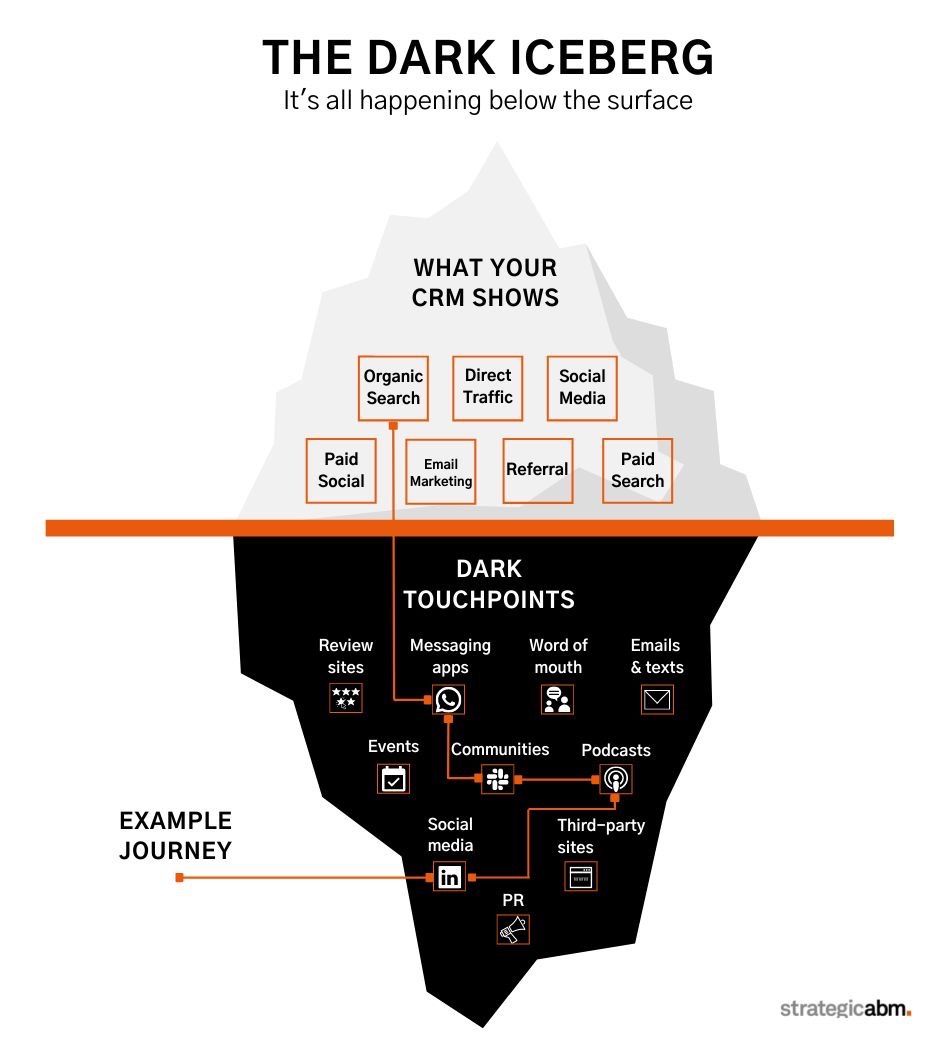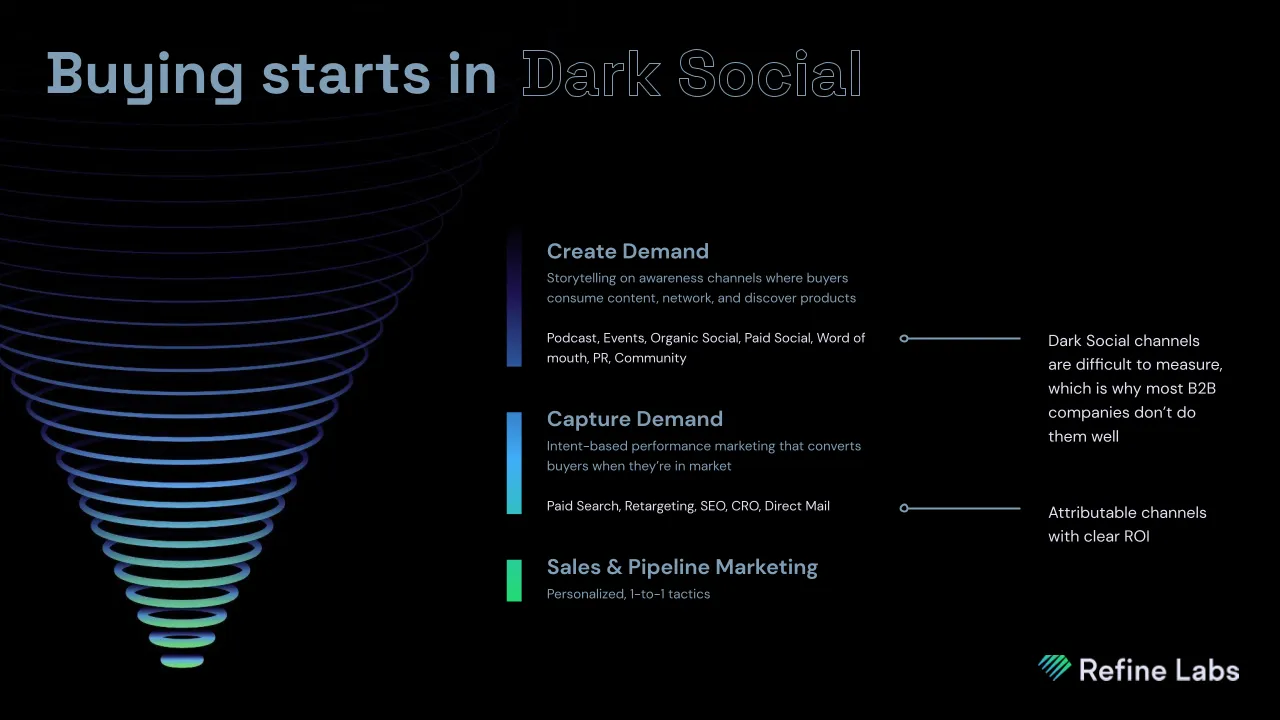B2B Podcast Tracking: The Dark Iceberg of Attribution

If you're a B2B marketer, you're probably well aware of the term "dark social." Maybe you've heard of "dark funnel" as well. While slightly different, we'll group them together for the purpose of this blog post. Dark social comprises the online activity of your potential customers that isn't tracked by traditional lead attribution software. This includes things like Slack communities, word of mouth, and - you guessed it - podcasts.
Launching a B2B podcast is an investment, but how can you justify that investment without knowing how to measure the results? Read on to find out how you can prove a B2B podcast is worth the investment for your organization.
Understanding the dark customer journey
First, let's take a look at this excellent graphic from strategicabm. This potential customer journey perfectly illustrates how conventional lead attribution often times doesn't reflect the true path of the buyer.

As you can see, there are a lot of touchpoints that happen before the first direct interaction with your brand. What shows up as a hit for organic search in your lead attribution software is actually a much more detailed story.
Demand generation vs. demand capture
Conventionally, demand capture has been the digital era's primary form of marketing. In the 2010's, Facebook and other PPC channels were cheap and highly effective. Marketing teams put all their eggs in the PPC basket and made sure that their products were in front buyers after intent signals appeared. Paid search is a great example of demand capture. Your prospects directly tell Google that they have demand for a product or service, and you bid for the right to be presented as their top option.
Demand capture is still a fundamental part of digital marketing, but PPC costs have risen and efficiency has plummeted, especially since the rollout of iOS 14. In order to compensate for the decreasing ROAS for demand capture channels, demand generation has proven to be a lifesaver for digital B2B organizations
You can wait and hope that prospects come to you as they refine their needs, or your brand can establish leadership that proves your value long before prospects know exactly what they want. You can walk them through that process, building trust and establishing your organization as their ideal solution. You can frame their buying journey while they develop an affinity for your brand, often times becoming brand champions who lead other prospects to your brand - not your industry as a whole.
Put simply, demand capture looks this:
A prospect identifies that they need a CRM. They Google the top CRM software, and after making some comparisons they book a demo with Salesforce - partly because Google's algorithm showed that ad first.
If you're Hubspot, that isn't going to cut it.
Demand generation looks like this:
After deriving real-world value from podcasts and video content, as well as hearing about Hubspot in their professional community, a prospect identifies that they need Hubspot as soon as CRM needs arise within their organization. They either Google "Hubspot CRM" or directly navigate to Hubspot.com. Lead attribution credits this to organic search or direct traffic, but we know better.

So, you're onboard with demand gen and you like the idea of podcasting, but the question remains unanswered: how can we track an investment in B2B podcasting to prove its value?
B2B podcast tracking in a demand gen world
Self reported attribution is the simplest method for understanding which leads are coming from podcasting. Your lead capture forms should include an option for visitors to tell you where they discovered your brand. As we discussed earlier, modern lead attribution software is not going to be representative of the complete buyer journey.
When you produce a quality B2B podcast, you'll have plenty of compelling content to distribute on social platforms like LinkedIn. Social engagement is easy to measure, so organizations can use a tool like PhantomBuster to scrape data from their posts and cross reference that with your CRM data.
More than anything else, though, you'll want to have a dedicated page on your domain to host your podcast. Route listeners to this page, rather than the show's feed in a podcast listening app. When you host your podcast feed on your own website, you can use your existing tracking software to see how users that listen to your show are impacted in the buying process.
If a prospect listens to a podcast, is the end result a shorter sales cycle? Do podcast listeners request demos at a higher rate? Do podcast listeners sign higher value contracts? The answer is often yes to these questions, but you'll know exactly how your organization benefits from a B2B podcast when you track visits and activity on a hosted webpage.
Podcasting is a powerful B2B marketing tool, but it requires a different strategy than other content forms. To make the most of your investment, use self reported attribution, social engagement data, and page level analytics to track the influence of your B2B podcast.
Thinking about launching a branded podcast for your organization? Drop us a line. We'd love to hear from you.
